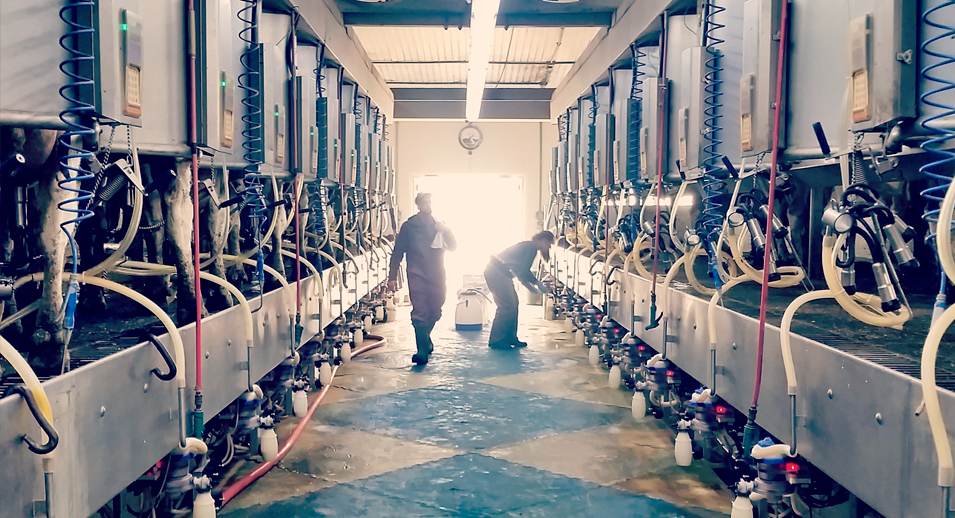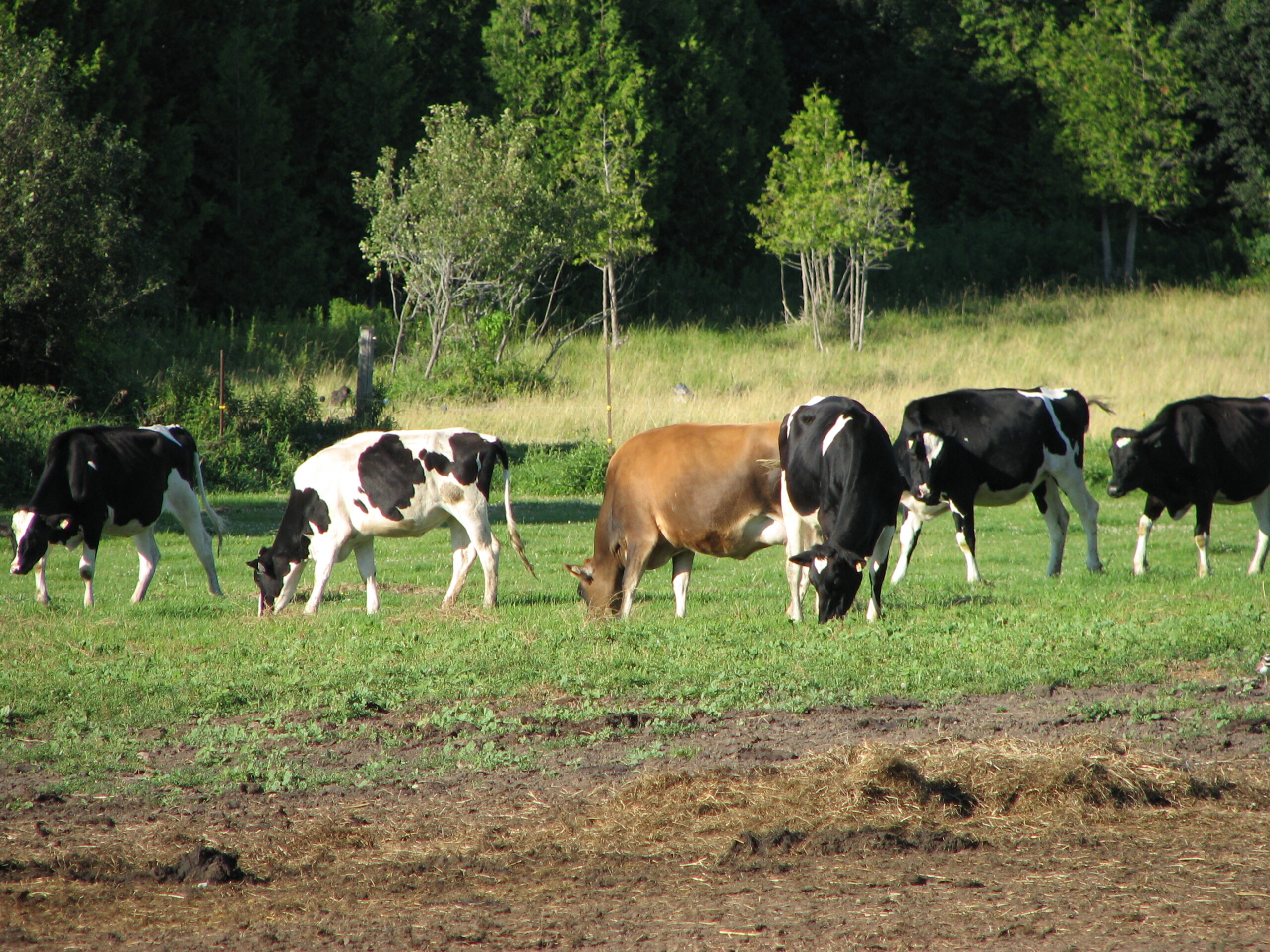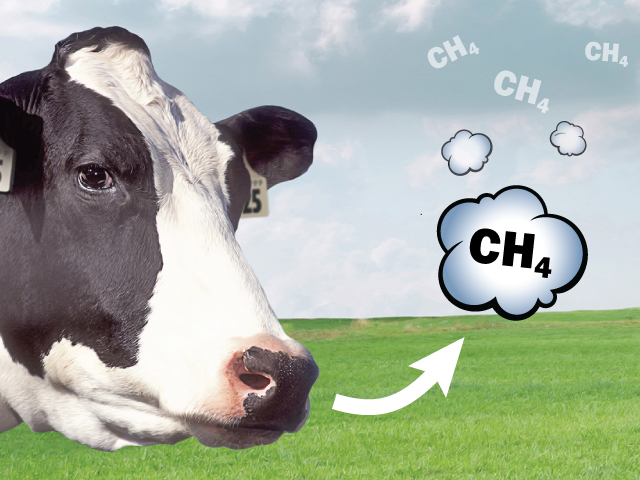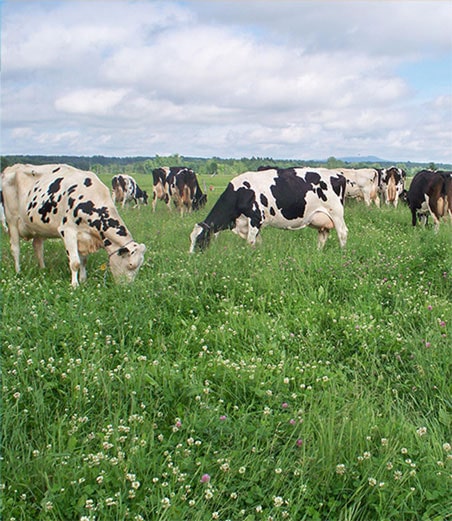Producer Welfare Pays Off!
- September 23, 2022
Recent studies suggest that farmer welfare is strongly associated with cow welfare. When we think about it, this should not come as a surprise. What if the virtuous circle of welfare started with you, the producers?

When we talk about animal welfare, we are referring to emotions, to what animals feel—imagine if your cows could express in words how they feel. The same applies to the occupational well-being of dairy farmers. What are your feelings about your daily life on the farm? How do these feelings impact your animals and your business?
A Challenging Lifestyle
It is well known that the job of a farmer is not easy. Every day, farmers face “stressors,” which may be financial or personal in nature. Loneliness, market uncertainty, media criticism, social pressures, family involvement in the business, illness, injury and lack of time are just a few of the stressors that farmers must deal with.
These stressors can negatively affect attitude, motivation and commitment levels as well as behaviour. As such, they can impact herd welfare. The opposite effect is also observed: good herd health and good animal welfare status can reduce stress, promote profitability and contribute to farmer welfare.
Several studies have shown that a farmer’s attitude and well-being influence the level of fear, productivity, health and welfare of the animals.
Several studies have shown that a farmer’s attitude and well-being influence the level of fear, productivity, health and welfare of the animals.
A recent Canadian study (Villettaz Robichaud et al., 2019) showed an association between on-farm animal welfare indicators and productivity. Another study from Norway (Hansen and Østerås, 2019) also concluded that there is a positive relationship between farmers’ occupational well-being, animal welfare and dairy business productivity. The authors mentioned that loneliness, income satisfaction and farmer optimism are associated with animal welfare indicators. In contrast, there is a negative association between farmer stress, animal welfare and business productivity.
This leads us to ask the following question: Are you stressed? If so, what is the impact and cost of stress on your herd and farm?
Animal Health and Productivity
The relationship between animals and farmers depends on the attitudes and behaviours of the farmers (Muri, 2012). Empathy, willingness and time invested in the animals all affect a farmer’s ability to recognize and decide to treat an animal that requires attention. Early detection and treatment of sick or injured animals are essential to limit economic losses associated with disease.
These economic losses are mainly associated with the cost of treatment, reduced productivity (milk production or growth, depending on the age) and impacts on reproductive status (pregnancy loss or reproduction difficulty). The longer the time between the onset of disease and treatment, the greater these losses become. In addition, the chances of recovery decrease proportionately.
To assess the losses related to these events, we must first keep in mind that the animal replacement cost is approximately $1,500 to $2,500 per head purchased, or between $4,000 and $4,500 per replacement animal.
The conception delay cost can vary from $3 to $6 per day per head, depending on the number of days open. Productivity loss and treatment costs vary depending on the disease.
The first example highlights the costs associated with mastitis. A Canadian study (Aghamohammadi et al., 2018) reported that the cost of mastitis amounts to $662 per dairy cow per year, and that a significant proportion of these costs are associated with subclinical mastitis (48% of costs, totalling $34,344 a year for 100 cows). Subclinical mastitis cases can easily go undetected, or be detected too late since their detection requires additional effort and time, and the use of indirect tests (CMT and SCC). What costs a lot in subclinical mastitis cases is the subsequent loss of milk production ($24,110 a year for 100 cows) and the culling of adult dairy cows ($6,743 a year for 100 cows).
Another example of a disease that can prove costly when undetected or treated late is ketosis. As with subclinical mastitis, subclinical ketosis can easily go undetected due to the lack of clinical signs and the additional effort required to detect it. It is estimated that each subclinical ketosis case costs $203 (Gohary et al., 2016). When detected late, subclinical ketosis develops into clinical ketosis, and the economic impact becomes even greater.
Reproduction
Reproductive success is a determining factor for the productivity of a dairy herd. The interest in and importance given to reproduction depend on the farmer’s attitude. Heat detection is often perceived as a chore. This task is at the bottom of the priority list when farmers are overworked and/or unmotivated.
Has heat detection become “just another job” on your farm? Failure to detect heat results in increased days open ($3 to $6 per day per head) and prolonged lactation. We estimate that each instance of undetected heat costs $63 to $126 per 21-day cycle per head. This cost includes the decrease in milk production during the productive life of the animal.
In addition, a combination of undetected heats and low conception rates can lead to premature culling decisions for cows that are not really problematic. This increases the replacement cost.
Workforce
Your stress level and your ability to manage it will have an impact on your attitude and that of your colleagues and employees. The virtuous circle of well-being principle also applies to employees. Bosses who feel good about themselves and have a positive attitude will tend to make their employees more comfortable, engaged, and motivated. In return, more comfortable, engaged and caring employees will lead to bosses being more relaxed.
In 2018, we interviewed Wisconsin farmers to learn about their motivation to become better employers. They almost universally cited stress reduction as the number one benefit of better staff management. One mentioned a reduction in animal handling errors, another less absenteeism and better retention. In each case, they saved money. There is no need to cull animals prematurely due to poor handling or to recruit and train a new employee. But even more importantly, the bottom line is a boss who sleeps better (Hoard’s Dairyman, August 2018).
Time and workforce management can quickly become a stressor. However, it can just as quickly become rewarding and profitable.
How to Avoid These Situations
- In which direction and how fast does the virtuous circle of well-being turn on your farm?
- The first question to ask yourself is, are you happy? Do you get satisfaction from working on your farm? Do you have a positive attitude at work?
As you know, there are resources available to discuss mental health and human resource issues. You don’t have to wait for a crisis to act. The first step is to ask yourself questions, to be vigilant and to get to know yourself.
Remember, a happy farmer is more likely to have happy cows and happy employees.
Don’t wait for your cows to tell you you’re in a mooood!
Resources
- Aghamohammadi, M., Haine, D., Kelton, D.F., Barkema, H.W., Hogeveen, H., Keefe, G.P. & Dufour, S. (2018, May). Herd-Level Mastitis-Associated Costs on Canadian Dairy Farms. Frontiers in Veterinary Science, Vol. 5, Article 100. Herd-Level Mastitis-Associated Costs on Canadian Dairy Farms (nih.gov)
- Gohary, K., Overton, M.W., Von Massow, M., LeBlanc, S.J., Lissemore, K.D. & Duffield, T. (2016, July). The cost of a case of subclinical ketosis in Canadian dairy herds. Canadian Veterinary Journal, Vol. 57, No. 7, p.728-732. 007_7048_SA(2015_0192Thecost).indd (nih.gov)
- Hansen, B.G. & Osteras, O. (2019). Farmer welfare and animal welfare – Exploring the relationship between farmer’s occupational well-being and stress, farm expansion and animal welfare. Preventive Veterinary Medicine, Vol. 170, 104741. https://doi.org/10.1016/j.prevetmed.2019.104741
- Villettaz Robichaud, M., Rushen, J., de Passillé, A.M., Vasseur, E., Orsel, K. & Pellerin, D. (2019). Associations between on-farm animal welfare indicators and productivity and profitability on Canadian dairies: I. On freestall farms. Journal of Dairy Science, Vol. 102, No. 5, 4341-4351. https://doi.org/10.3168/jds.2018-14817
- Weersinka, A., VanLeeuwenb, J.A., Chia, J. & Keefeb. G.P. (2002). Direct Production Losses and Treatment Costs due to Four Dairy Cattle Diseases. Advances in Dairy Technology, Vol. 14, p. 55-75. Microsoft Word – Chapter 05 Weersink.doc (ualberta.ca)
- Jetté-Nantel, S., Blazek, J., & T. Wagner. (2018). What is the value of being a good boss? Hoard’s Dairyman, 25 août 2018, p. 481.
Need help
- From anywhere in Canada, call 1-833-456-4566 or text 45645;
- For Quebec resident, call 1-866-APPELLE (1-866-277-3553);
- If you or a loved one is in danger, call 911.










